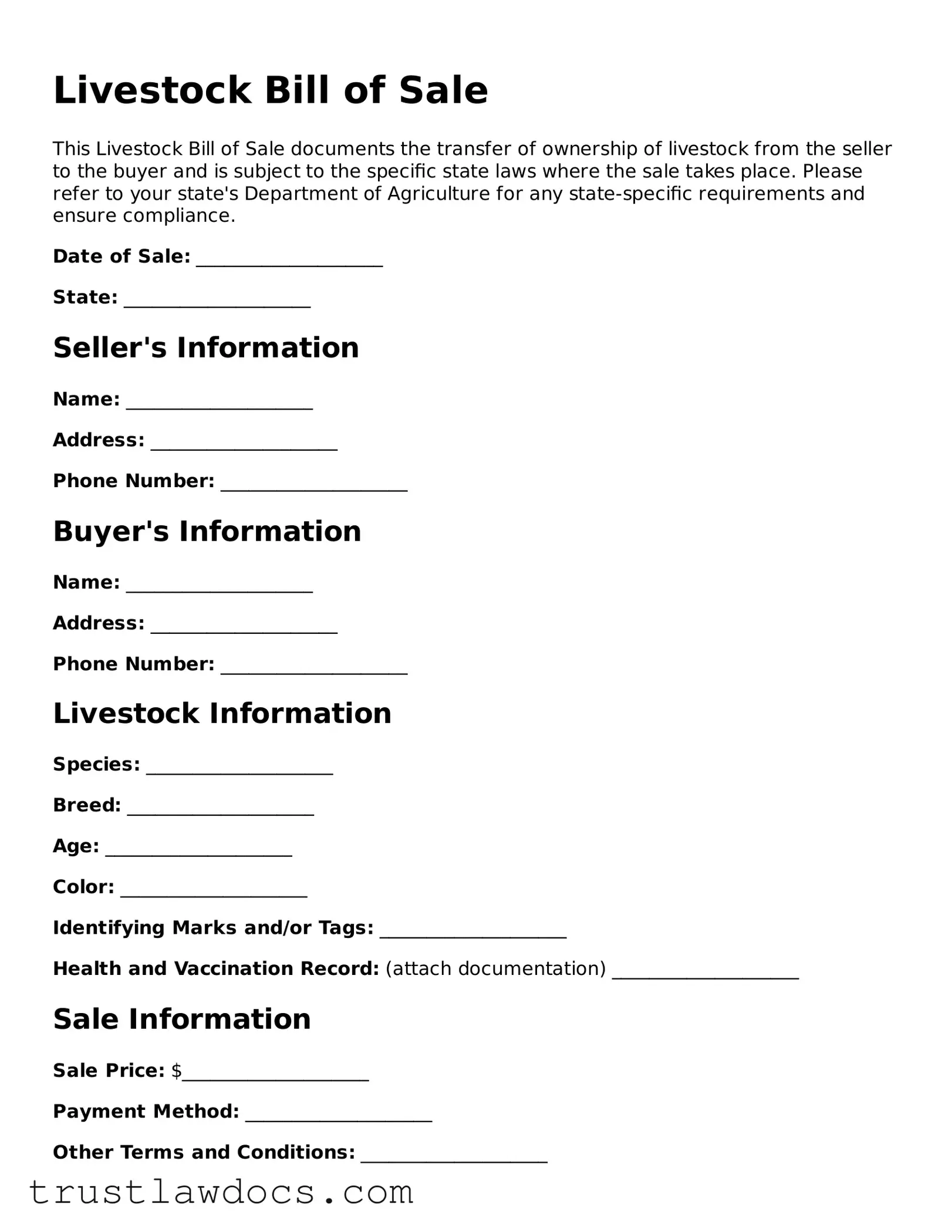What is a Livestock Bill of Sale?
A Livestock Bill of Sale is a legal document that records the sale and transfer of ownership of livestock from a seller to a buyer. It serves as a receipt for the transaction and includes important details such as the description of the livestock, sale date, and price.
Why do I need a Livestock Bill of Sale?
Having a Livestock Bill of Sale is crucial for several reasons. It verifies the change of ownership, provides legal protection in case of disputes, and is often required for record-keeping and tax purposes. It's an essential piece of documentation for both buyers and sellers.
What information should be included in a Livestock Bill of Sale?
A comprehensive Livestock Bill of Sale should include the names and addresses of the buyer and seller, a detailed description of the livestock (including species, breed, quantity, and any identifying marks), the sale price, payment terms, the date of sale, and any warranties or guarantees. Signatures of both parties are also necessary to validate the document.
Do I need to notarize my Livestock Bill of Sale?
The need for notarization can vary depending on local laws and the specifics of the transaction. While not always a requirement, getting the document notarized can add an extra layer of legality and help to prevent potential legal issues.
Can I write a Livestock Bill of Sale by myself?
Yes, you can create a Livestock Bill of Sale on your own, provided it includes all the necessary information and both parties agree to the terms. There are templates available, but ensure the one you choose complies with local regulations.
What happens if I don’t have a Livestock Bill of Sale?
Not having a Livestock Bill of Sale can lead to difficulties in proving ownership, resolving disputes, and could have tax implications. It's strongly advised to have this document in place to safeguard your interests.
Is a Livestock Bill of Sale the same as a title?
No, a Livestock Bill of Sale is not the same as a title. It is a transaction document that records the sale. In contrast, a title is an official record of ownership. For livestock, formal titles are not always issued, making the Bill of Sale even more important.
How can I ensure my Livestock Bill of Sale is legally binding?
To ensure your Livestock Bill of Sale is legally binding, make sure it contains all required information, is agreed upon by both parties, and complies with local and state laws. It’s often advisable to consult with a legal professional to confirm its validity.
Can a Livestock Bill of Sale be used for tax purposes?
Yes, a Livestock Bill of Sale can be used for tax purposes. It provides a record of the transaction that can be important for reporting the sale on your tax returns. Keep a copy for your records to support your tax filings.
